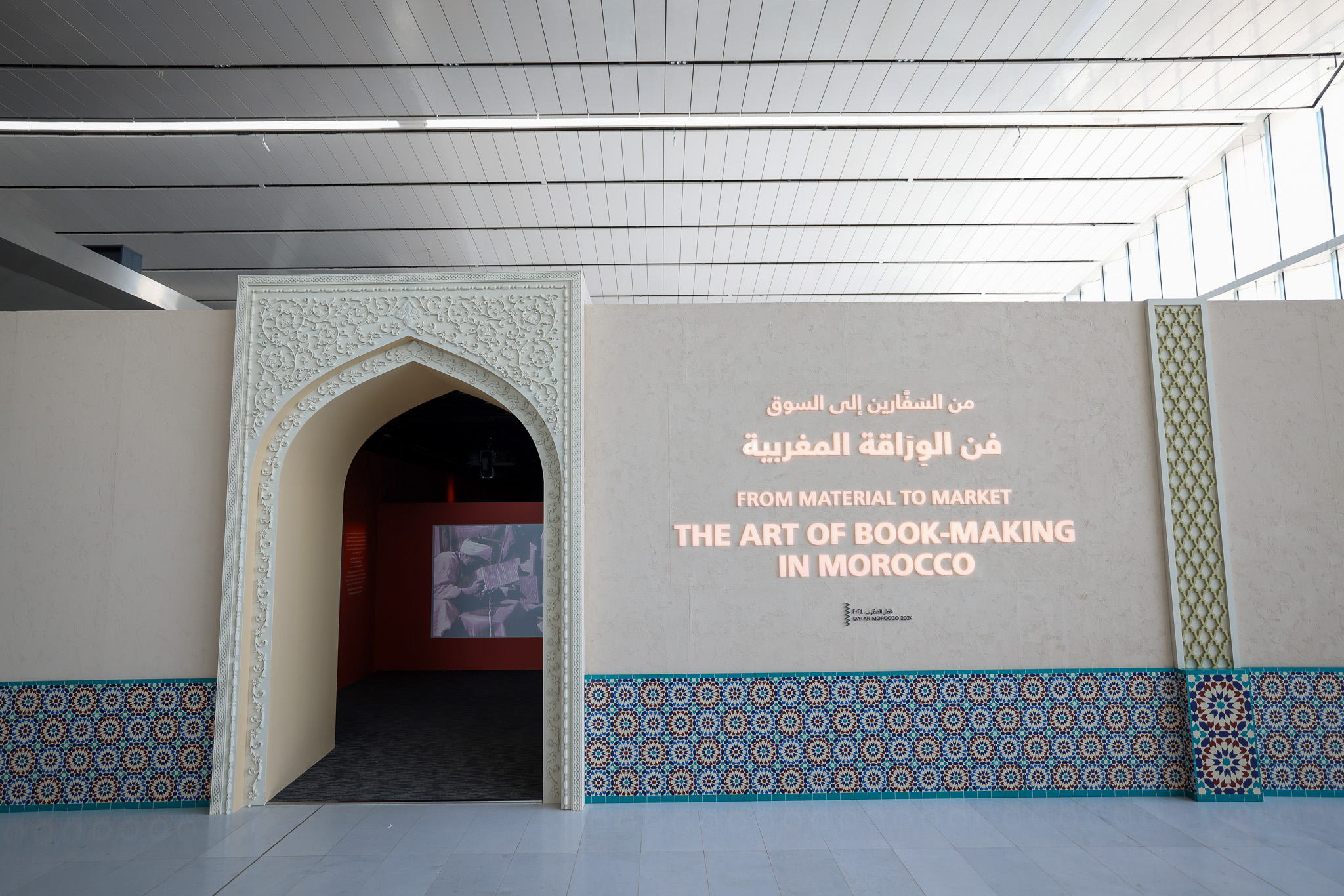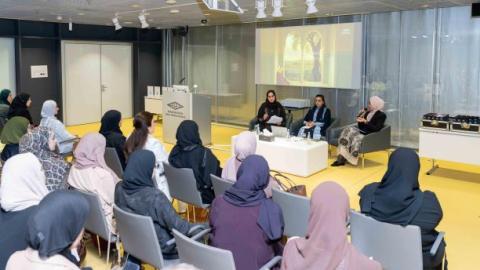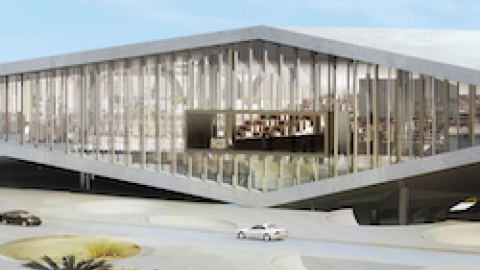
Over the past three months, Qatar National Library has captivated visitors, drawing them into a world where history, craftsmanship and knowledge converge to honor Morocco’s centuries-old tradition of book production. The exhibition ‘From Material to Market: The Art of Book-Making in Morocco’ celebrates the Qatar-Morocco 2024 Year of Culture, showcasing how art connects people across time and space.
As part of this cultural exchange and to complement the exhibition, several Qatari artists contributed unique pieces inspired by Morocco’s craft. Two of these artists, Mohammed Al Emadi and Muna Al Bader, have shared their insights and the creative processes behind their contributions.
Mohammed Al Emadi’s creative journey began with a vision of Morocco’s scholarly legacy. As he examined ancient books and manuscripts from the exhibition, he felt immersed in a time when the Islamic Empire flourished. “I could imagine a scholar in Morocco, spreading his knowledge on ancient paper, binding it together with patterned leather,” Al Emadi recalled, reflecting on the inspiration behind his piece.
His digital work blends layers and colors to create a visual experience that feels both timeless and contemporary. “The art I practice is digital, but layering is what gives it a unique form. I use frames, floating books and threads,” explained Al Emadi.
For Al Emadi, art is an expression of culture and identity that connects individuals, societies, and nations. “Art represents the uniqueness of nations. When mutuality happens, it creates an identity of expression as a society,” he said. Like Moroccan bookbinding, his work preserves cultural heritage while acknowledging how traditions evolve.
He also views his piece as a way to strengthen ties between nations. “Exhibitions like this break boundaries and foster connections that lead to knowledge exchange and friendship,” he reflected. His hope for visitors of the exhibition is simple: “I want them to feel proud of the culture, humbled by the knowledge passed down through generations, and curious to learn more.”
Muna Al Bader’s approach centers around exploring connections—between people, cultures and traditions. Her piece ‘Azure Threads’ blends elements from Morocco’s textiles, architecture and bookbinding to create a visual tribute to its rich cultural tapestry. The intricate patterns and deep azure blue symbolize Morocco’s unique position at the crossroads of Africa, Europe and the Middle East.
“Azure blue is deeply associated with Moroccan identity,” Al Bader explained. “It represents peace and the vast cultural wisdom of the country. The movement of the patterns in my work reflects the flow of time and Morocco’s rich history.”
Her piece uniquely links Moroccan bookbinding with the artistry of textiles. “Both crafts require a deep understanding of materiality and texture. The handcrafting of books often uses silk, leather and gold leaf—the same materials featured in Moroccan garments,” she said, highlighting the connection between these practices. For Al Bader, both bookbinding and textiles tell stories—one through words, the other through fabric—each carrying the legacy of Moroccan culture.
The creative process behind Azure Threads involved extensive research into Moroccan art and heritage. “I explored the symbols, motifs, and patterns unique to Moroccan culture. I then translated these ideas into design, using flowing colors that mirror the smooth transitions seen in Moroccan ceramics and textiles,” she explained. The finished piece captures the essence of Moroccan culture and invites the viewer to experience its timeless beauty.
As a Qatari artist, Al Bader recognizes many shared cultural values between Qatar and Morocco. “Both cultures deeply respect artisanal craftsmanship and preserving traditional practices. In both Qatar and Morocco, the act of bookbinding is an art form that conveys cultural pride and identity,” she said.
For Al Bader, art plays a vital role in preserving and celebrating cultural heritage. “Art is a living record of history and identity. Art captures the essence of our cultural values and traditions that are passed on to future generations. Through art, we ensure the beauty of our heritage remains alive and relevant today,” she added.
Like Al Emadi, Al Bader believes exhibitions are powerful tools for fostering mutual understanding between nations. “When nations showcase their artistic achievements, they invite others to engage with their history, traditions and values, leading to greater empathy and respect,” she said.
Ultimately, both artists aim for their works to serve as a powerful reminder of the beauty found in cultural unity. “My piece is a celebration of cultural unity, and I want visitors to recognize the shared values that bind us all, regardless of background,” said Al Bader.
Through their artistry, Mohammed Al Emadi and Muna Al Bader celebrate cultural legacies that unite people across borders.
Running until April 2025, the exhibition, From Material to Market: The Art of Book-Making in Morocco offers a rare glimpse into the centuries-old traditions of Moroccan book production, featuring rare manuscripts, intricate calligraphy and vivid depictions of the materials that have shaped the art of bookbinding in the region.







